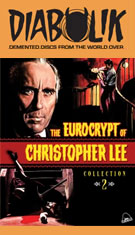

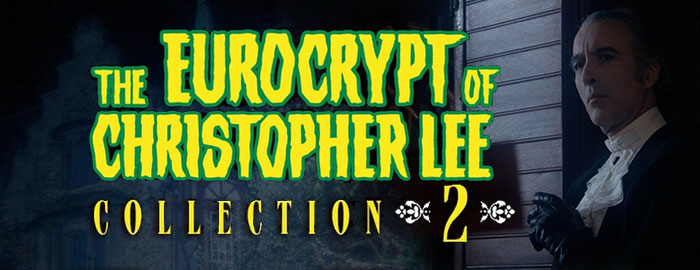
UNCLE WAS A VAMPIRE
Color, 1959, 100 mins. 35 secs.
Directed by Steno
Starring Renato Rascel, Christopher Lee, Sylva Koscina, Susanne Loret
Severin Films (Blu-ray) (US R0 HD) / WS (2.35:1) (16:9)
THE SECRET OF THE RED ORCHID
B&W, 1962, 84 mins. 17 secs.
Directed by Helmuth Ashley
Starring Adrian Hoven, Marisa Mell, Christopher Lee, Pinkas Braun, Klaus Kinski, Christiane Nielsen, Eric Pohlmann, Fritz Rasp
Severin Films (Blu-ray) (US RA HD), Leonine (Blu-ray & DVD) (Germany RB/R2 HD/PAL) / WS (1.66:1), Retromedia (DVD) (US R0 NTSC)
DARK PLACES
Color, 1974, 90 mins. 45 secs.
Directed by Don Sharp
Starring Christopher Lee, Joan Collins, Herbert Lom, Robert Hardy, Jane Birkin, Jean Marsh
Severin Films (Blu-ray) (US RA HD) / WS (1.85:1) (16:9)
DRACULA AND SON
Color, 1976, 99 mins. 13 secs. / 77 mins. 54 secs.
Directed by Édouard Molinaro
Starring Christopher Lee, Bernard Menez, Marie-Hélène Breillat, Catherine Breillat
Severin Films (Blu-ray) (US RA HD), Gaumont (DVD) (France R2 PAL)
/ WS (1.66:1) (16:9)
MURDER STORY
Color, 1988, 89 mins. 44 secs.
Directed by Eddie Arno & Markus Innocenti
Starring Christopher Lee, Alexis Denisof, Bruce Boa
Severin Films (Blu-ray) (US R0 HD) / WS (1.85:1) (16:9)
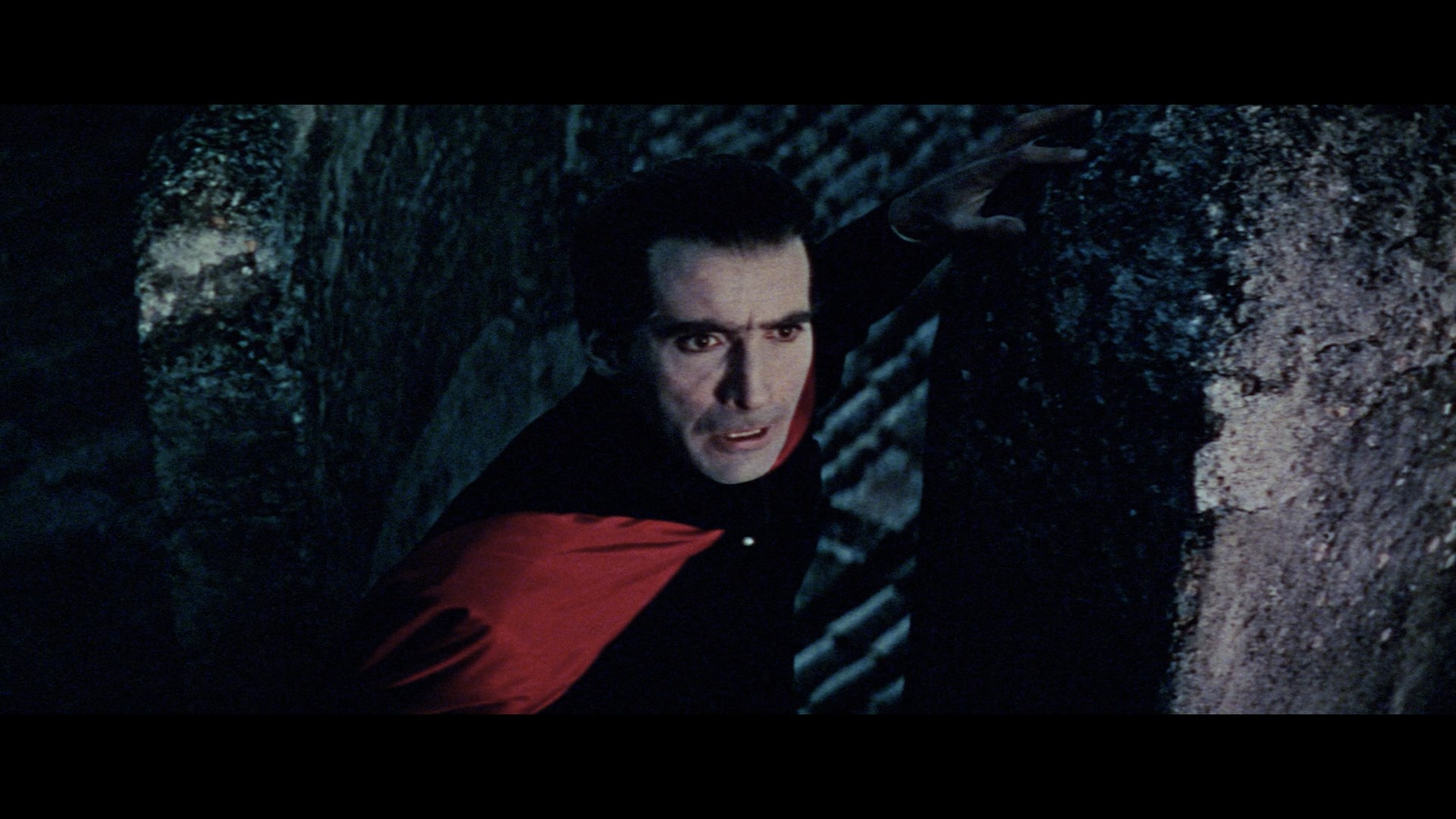 all European horror stars and a mainstream crossover
all European horror stars and a mainstream crossover 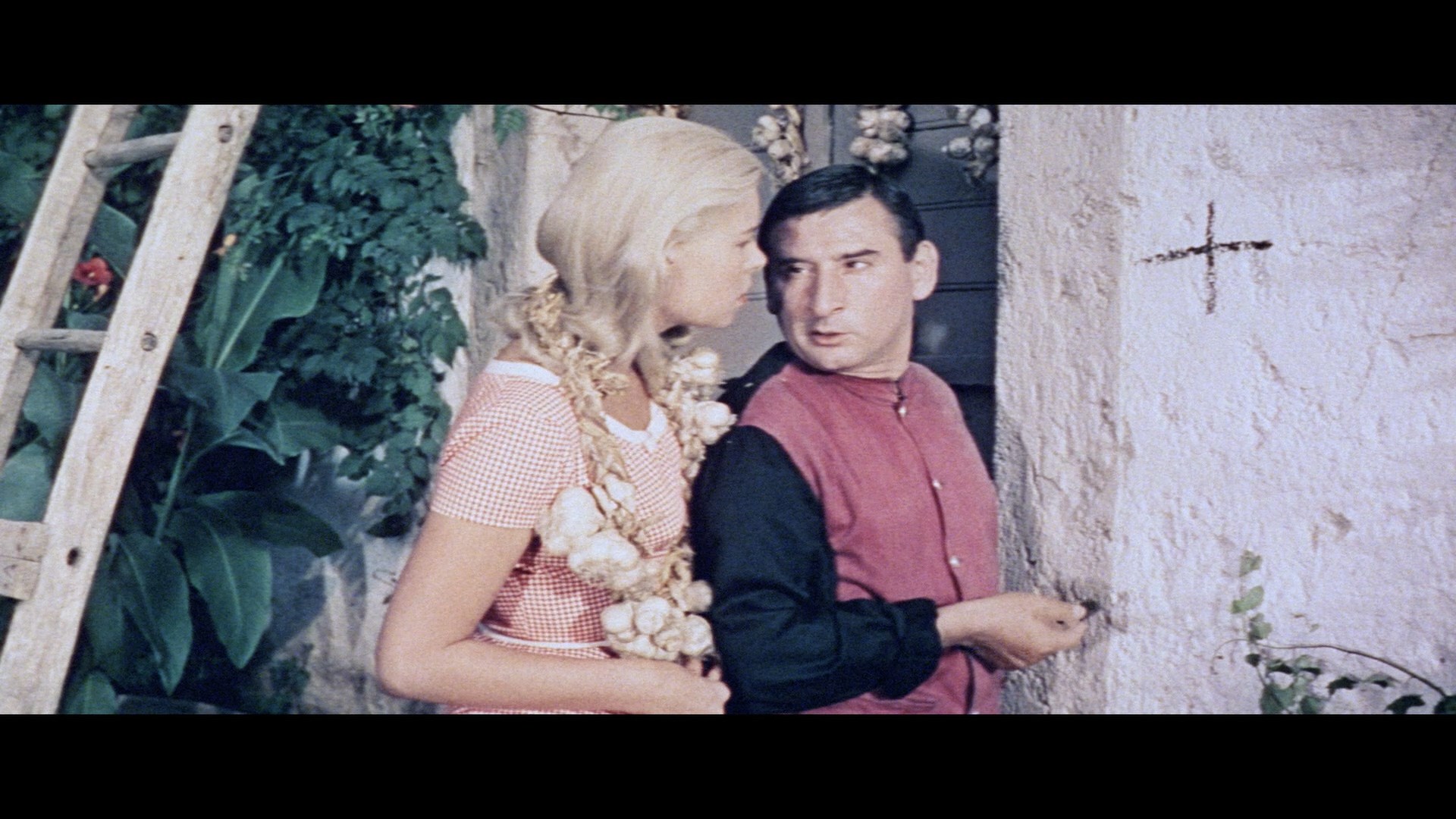 name thanks to his appearances in multiple big movie series, Christopher Lee had a long and wild career filled with ups and downs as well as many trips around the globe. Though horror fans tend to cherish his extensive work with Hammer the most (along with other films outside the company frequently pairing him with Peter Cushing), he popped up all over Europe in other productions that dabbled in various genres as well. That aspect of his output is the focus of Severin Films' 2022 stacked set The Eurocrypt of Christopher Lee Collection 2, featuring six Blu-ray and a soundtrack CD. You get some desirable rarities here that show off a few different facets of Lee, and you'll probably have the most fun watching them in order to see how his films evolved over the three decades represented here.
name thanks to his appearances in multiple big movie series, Christopher Lee had a long and wild career filled with ups and downs as well as many trips around the globe. Though horror fans tend to cherish his extensive work with Hammer the most (along with other films outside the company frequently pairing him with Peter Cushing), he popped up all over Europe in other productions that dabbled in various genres as well. That aspect of his output is the focus of Severin Films' 2022 stacked set The Eurocrypt of Christopher Lee Collection 2, featuring six Blu-ray and a soundtrack CD. You get some desirable rarities here that show off a few different facets of Lee, and you'll probably have the most fun watching them in order to see how his films evolved over the three decades represented here.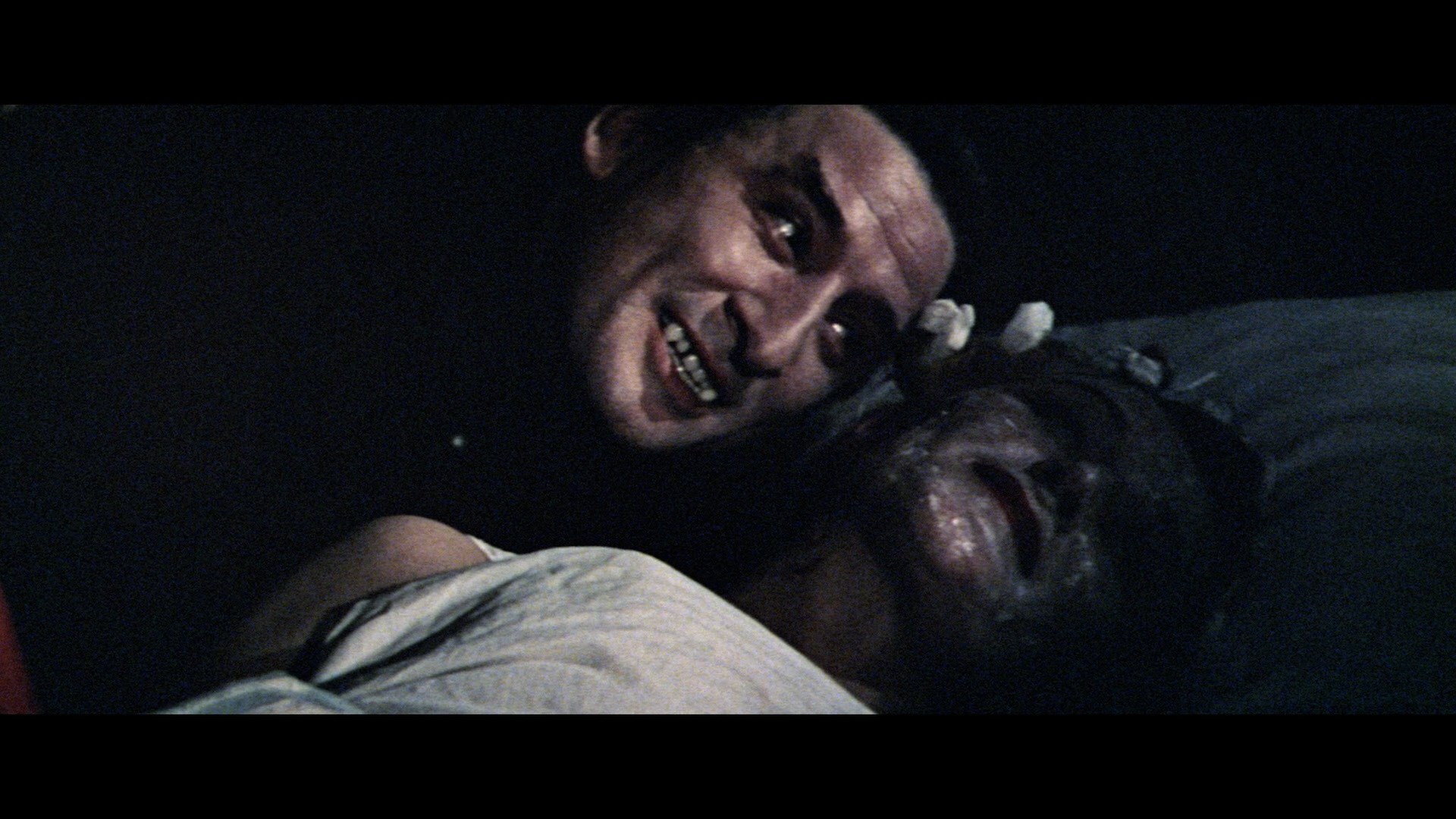 Osvaldo's put out by the situation, especially when he gets bitten himself and starts to put the bite on random female
Osvaldo's put out by the situation, especially when he gets bitten himself and starts to put the bite on random female 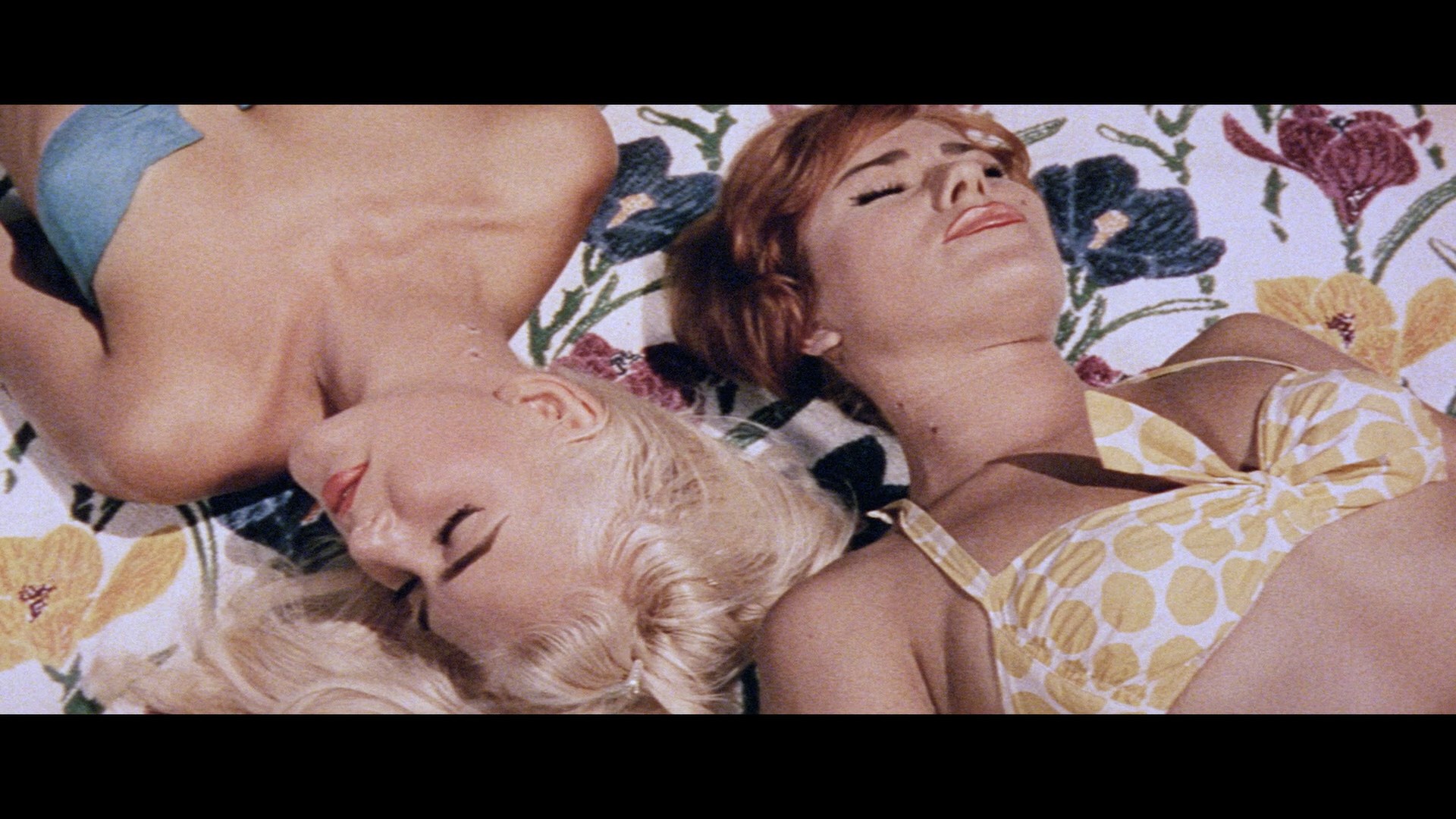 guests. Along the way you get a robust cast of Euro starlets including Sylva Koscina, Antje Greek, and Susanne Loret, some pretty funny gags, and catchy pop numbers highlighted by the concluding "Dracula Cha-Cha." Shot in sunny Ultrascope, this is just one of many Italian comedies from prolific writer-director Steno who turned out a bunch of Totò titles and the Alberto Sordi classic An American in Rome. Unfortunately it didn't hit the U.S. until 1964 when it went straight to TV from Embassy, cut to 94 minutes and very carelessly dubbed-- even for Lee, who was visibly performing his lines in English anyway. To make matters worse, the film was brutally cropped to 1.33:1 which ruined many of the gags while also obscuring all the lovely scenery.
guests. Along the way you get a robust cast of Euro starlets including Sylva Koscina, Antje Greek, and Susanne Loret, some pretty funny gags, and catchy pop numbers highlighted by the concluding "Dracula Cha-Cha." Shot in sunny Ultrascope, this is just one of many Italian comedies from prolific writer-director Steno who turned out a bunch of Totò titles and the Alberto Sordi classic An American in Rome. Unfortunately it didn't hit the U.S. until 1964 when it went straight to TV from Embassy, cut to 94 minutes and very carelessly dubbed-- even for Lee, who was visibly performing his lines in English anyway. To make matters worse, the film was brutally cropped to 1.33:1 which ruined many of the gags while also obscuring all the lovely scenery.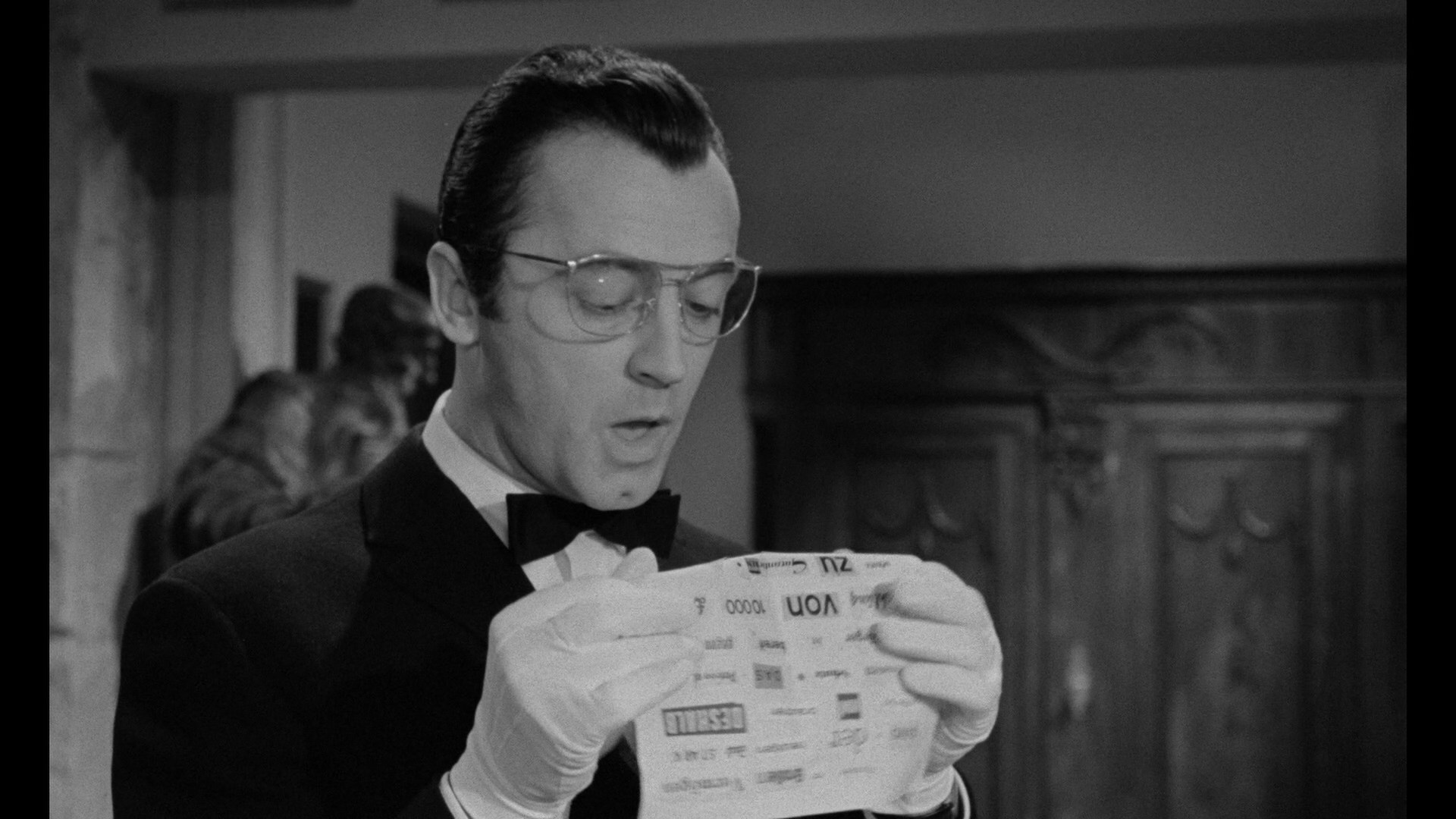 Disc two marks a very welcome development with the first
Disc two marks a very welcome development with the first 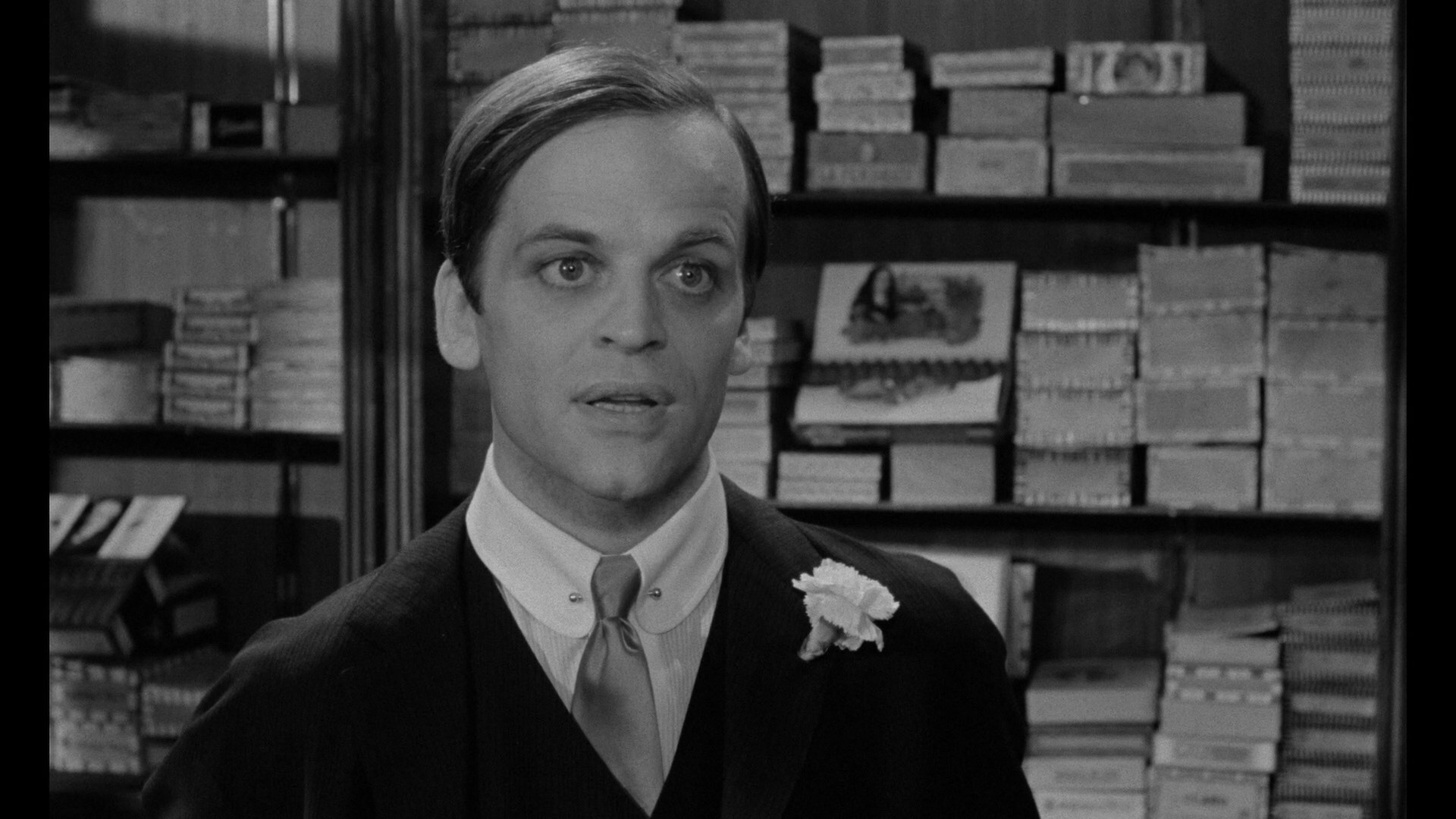 U.S. release of an Edgar Wallace Krimi on Blu-ray as well as the first Wallace title to hit any kind of authorized physical disc. In case you've missed out, a Krimi is the wonderfully Germanic strain of thriller that began in 1959 and continued into the early '70s when it eventually mutated with the Italian giallo a few times. The most famous ones were based on novels by English novelist Wallace (who was insanely popular in Germany) and almost entirely set in England despite being shot in West Germany (or other countries like Denmark on occasion). Delightfully pulpy and very entertaining, the films remain cult favorites in Germany but didn't really catch on in the U.S. despite several titles getting dubbed theatrical or TV releases. Lee turned up in two of them: 1961's The Devil's Daffodil (which he shot in both English and German-langauge versions, being fluent in both languages) and 1963's Das Rätsel der roten Orchidee (The Puzzle of the Red Orchid), which was only shot in German and went straight to American television as The Secret of the Red Orchid. Though based on Wallace books, both films depart from the formula fairly radically with their whodunit elements largely sidelined in favor of bullet-laden crime stories with Lee cast as a dogged officer of the law. Here he's cast as Captain Allerman, a Chicago-based fed who heads to London on the heels of gang leader Kerkie Minelli (Pohlmann) and his vivacious wife, Cora (a scene-stealing Nielsen). There Allerman teams up with London cop Inspector Weston (Hoven) since two rival gangs are extorting rich residents and rubbing out anyone who doesn't pay up. One of the blackmail victims (Krimi vet Rasp) leaves behind an assistant and heir, Lilian (Danger: Diabolik's Mell), as well as a shady, orchid-obsessed nephew, Tanner (Rasp), both of whom figure in the escalating body count. Also on hand is early Krimi mascot Klaus Kinski as a gangster using a tobacco shop as his cover, while regular Wallace comic relief Eddi Arent gets to shine as "Death Butler" Parker whose employers
U.S. release of an Edgar Wallace Krimi on Blu-ray as well as the first Wallace title to hit any kind of authorized physical disc. In case you've missed out, a Krimi is the wonderfully Germanic strain of thriller that began in 1959 and continued into the early '70s when it eventually mutated with the Italian giallo a few times. The most famous ones were based on novels by English novelist Wallace (who was insanely popular in Germany) and almost entirely set in England despite being shot in West Germany (or other countries like Denmark on occasion). Delightfully pulpy and very entertaining, the films remain cult favorites in Germany but didn't really catch on in the U.S. despite several titles getting dubbed theatrical or TV releases. Lee turned up in two of them: 1961's The Devil's Daffodil (which he shot in both English and German-langauge versions, being fluent in both languages) and 1963's Das Rätsel der roten Orchidee (The Puzzle of the Red Orchid), which was only shot in German and went straight to American television as The Secret of the Red Orchid. Though based on Wallace books, both films depart from the formula fairly radically with their whodunit elements largely sidelined in favor of bullet-laden crime stories with Lee cast as a dogged officer of the law. Here he's cast as Captain Allerman, a Chicago-based fed who heads to London on the heels of gang leader Kerkie Minelli (Pohlmann) and his vivacious wife, Cora (a scene-stealing Nielsen). There Allerman teams up with London cop Inspector Weston (Hoven) since two rival gangs are extorting rich residents and rubbing out anyone who doesn't pay up. One of the blackmail victims (Krimi vet Rasp) leaves behind an assistant and heir, Lilian (Danger: Diabolik's Mell), as well as a shady, orchid-obsessed nephew, Tanner (Rasp), both of whom figure in the escalating body count. Also on hand is early Krimi mascot Klaus Kinski as a gangster using a tobacco shop as his cover, while regular Wallace comic relief Eddi Arent gets to shine as "Death Butler" Parker whose employers 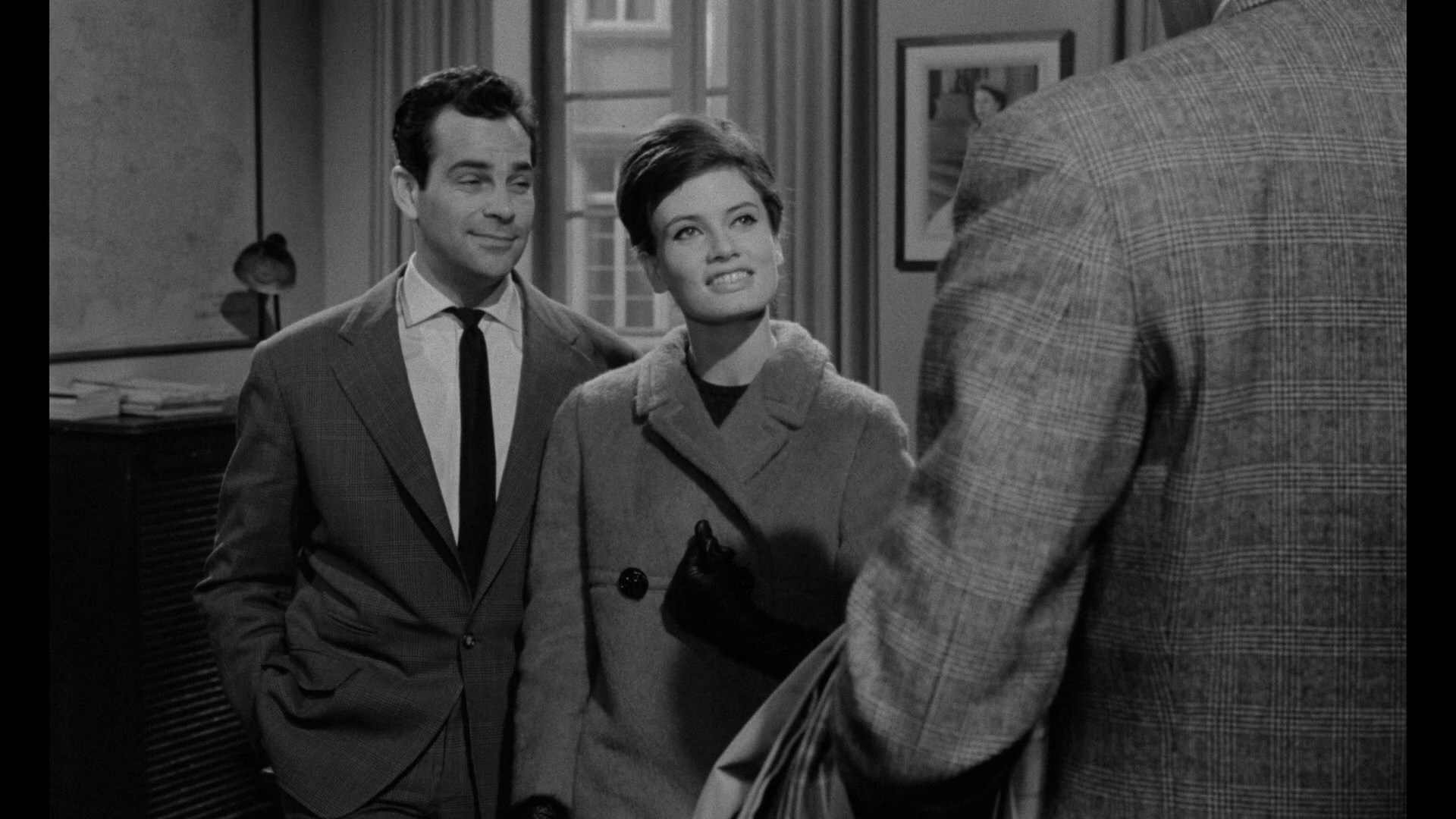 keep getting bumped off.
keep getting bumped off. 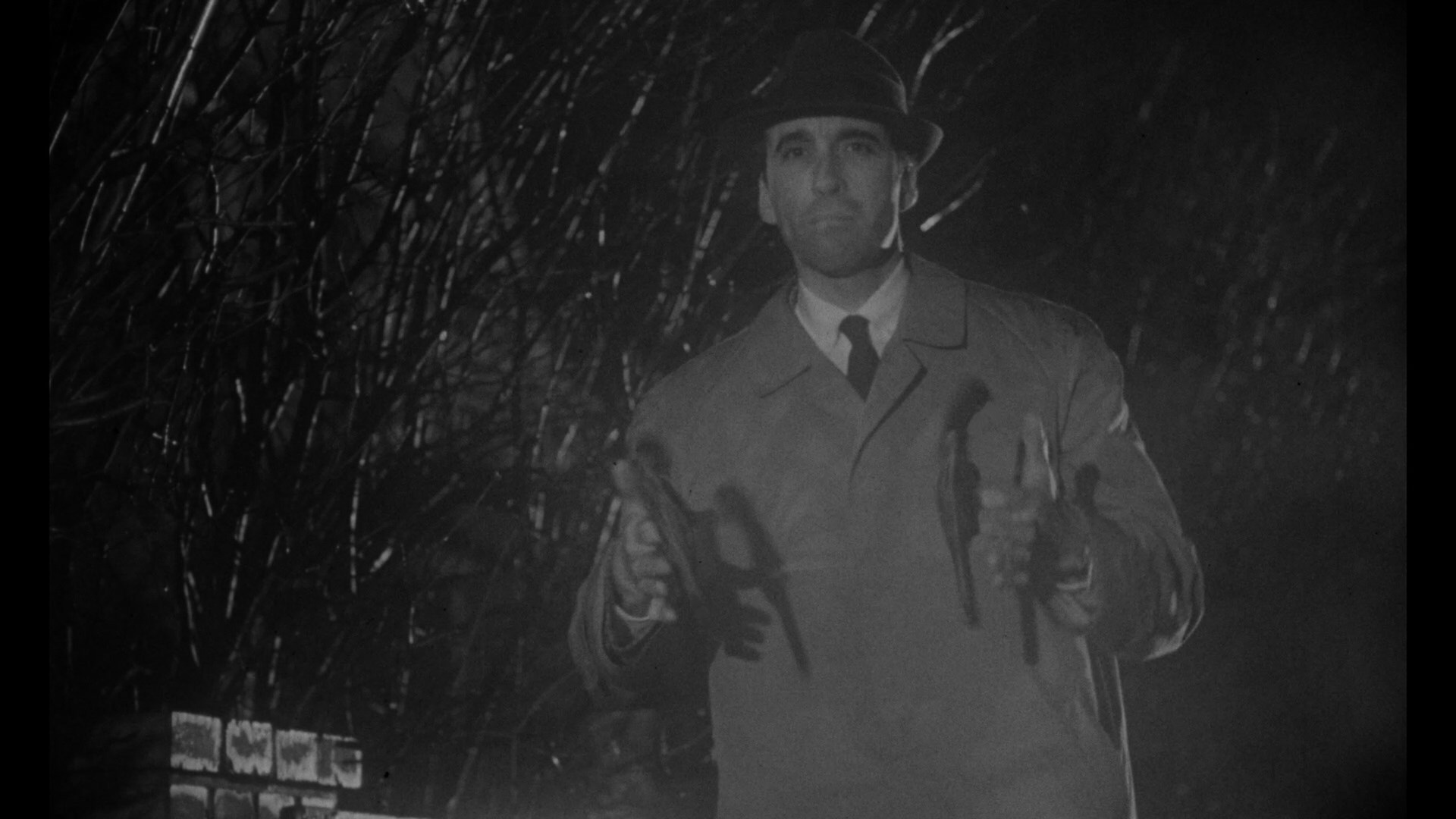 Though it may not be especially representative of the Wallace series as a whole, Red Orchid is a lively affair with a jazzy Peter Thomas score and a clearly committed performance by Lee who even gets to twirl a pair of pistols gunslinger-style in one of the best scenes. You're best going in not even worrying about the whodunit aspect at all as it barely even tries to pay off; instead it's a great showcase for the subgenre's regular stable of actors at their peak with Hoven also slotting in nicely in his one shot at a Wallace hero (though he did appear in and even direct a few other non-Wallace Krimis). Unfortunately most of the charms of this film were smothered by its truly awful English dub, which is how it first hit DVD in a so-so transfer from Retromedia paired up with the solid Bryan Edgar Wallace serial killer shocker, Monster of London City. Licensed from Studiocanal, the official Severin Blu-ray is a massive step up and comparable in quality to the earlier, excellent quality German Blu-ray (which featured both the German and English tracks with passable but very flawed English dubtitles, and no extras). Here you get both tracks as well (DTS-HD MA 2.0 mono) with English SDH tracks for the dub and properly translated subtitles for the German track, as well as the subtitled German trailer. Two audio commentaries are included but can't be assessed here since one features this writer and Troy Howarth; the other has Kim Newman and Barry Forshaw. However, it's worth noting that there's very little overlap between the two so you'll hopefully find both enjoyable.
Though it may not be especially representative of the Wallace series as a whole, Red Orchid is a lively affair with a jazzy Peter Thomas score and a clearly committed performance by Lee who even gets to twirl a pair of pistols gunslinger-style in one of the best scenes. You're best going in not even worrying about the whodunit aspect at all as it barely even tries to pay off; instead it's a great showcase for the subgenre's regular stable of actors at their peak with Hoven also slotting in nicely in his one shot at a Wallace hero (though he did appear in and even direct a few other non-Wallace Krimis). Unfortunately most of the charms of this film were smothered by its truly awful English dub, which is how it first hit DVD in a so-so transfer from Retromedia paired up with the solid Bryan Edgar Wallace serial killer shocker, Monster of London City. Licensed from Studiocanal, the official Severin Blu-ray is a massive step up and comparable in quality to the earlier, excellent quality German Blu-ray (which featured both the German and English tracks with passable but very flawed English dubtitles, and no extras). Here you get both tracks as well (DTS-HD MA 2.0 mono) with English SDH tracks for the dub and properly translated subtitles for the German track, as well as the subtitled German trailer. Two audio commentaries are included but can't be assessed here since one features this writer and Troy Howarth; the other has Kim Newman and Barry Forshaw. However, it's worth noting that there's very little overlap between the two so you'll hopefully find both enjoyable. 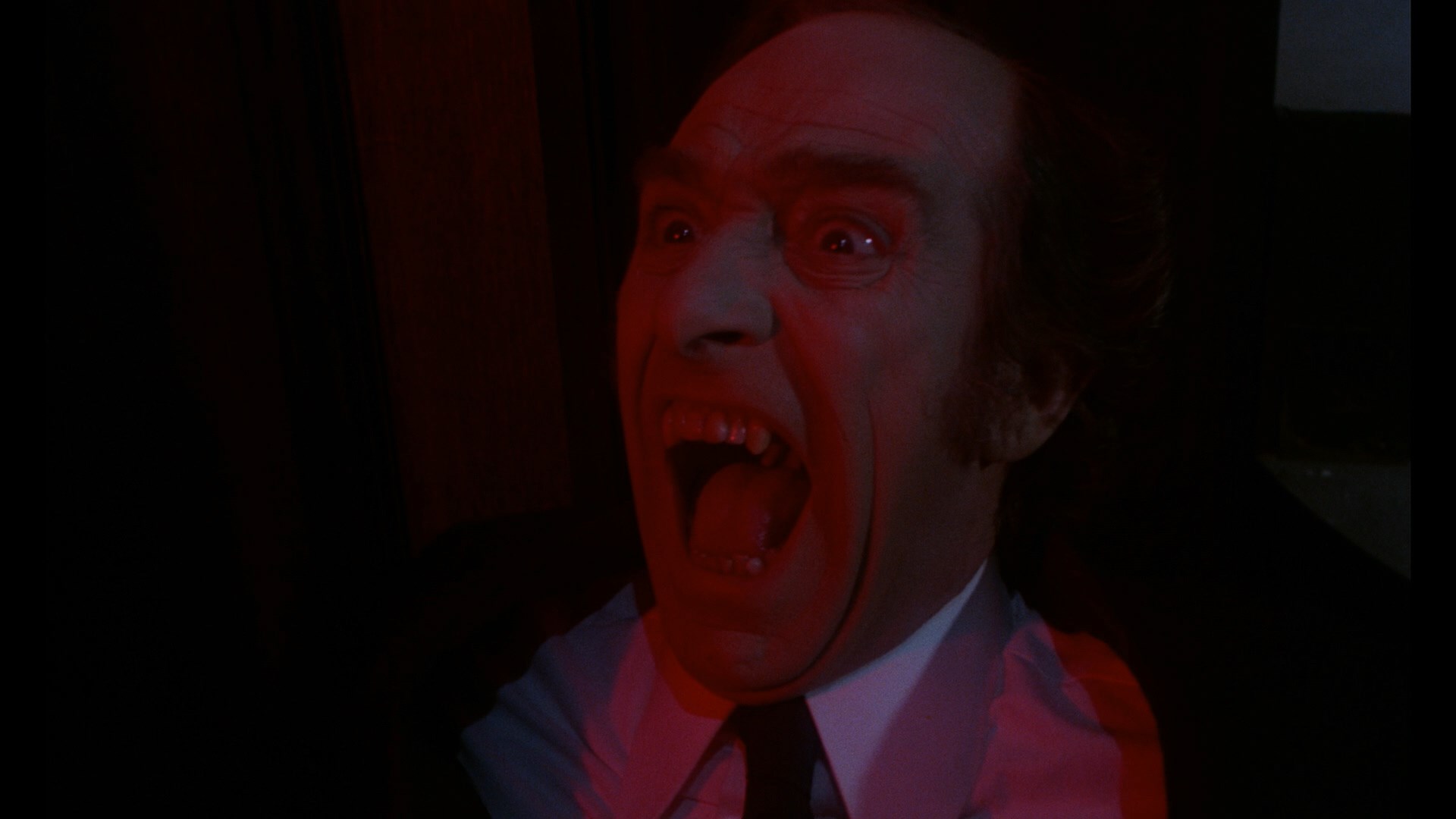 and Son (Dracula père et fils), one of numerous
and Son (Dracula père et fils), one of numerous 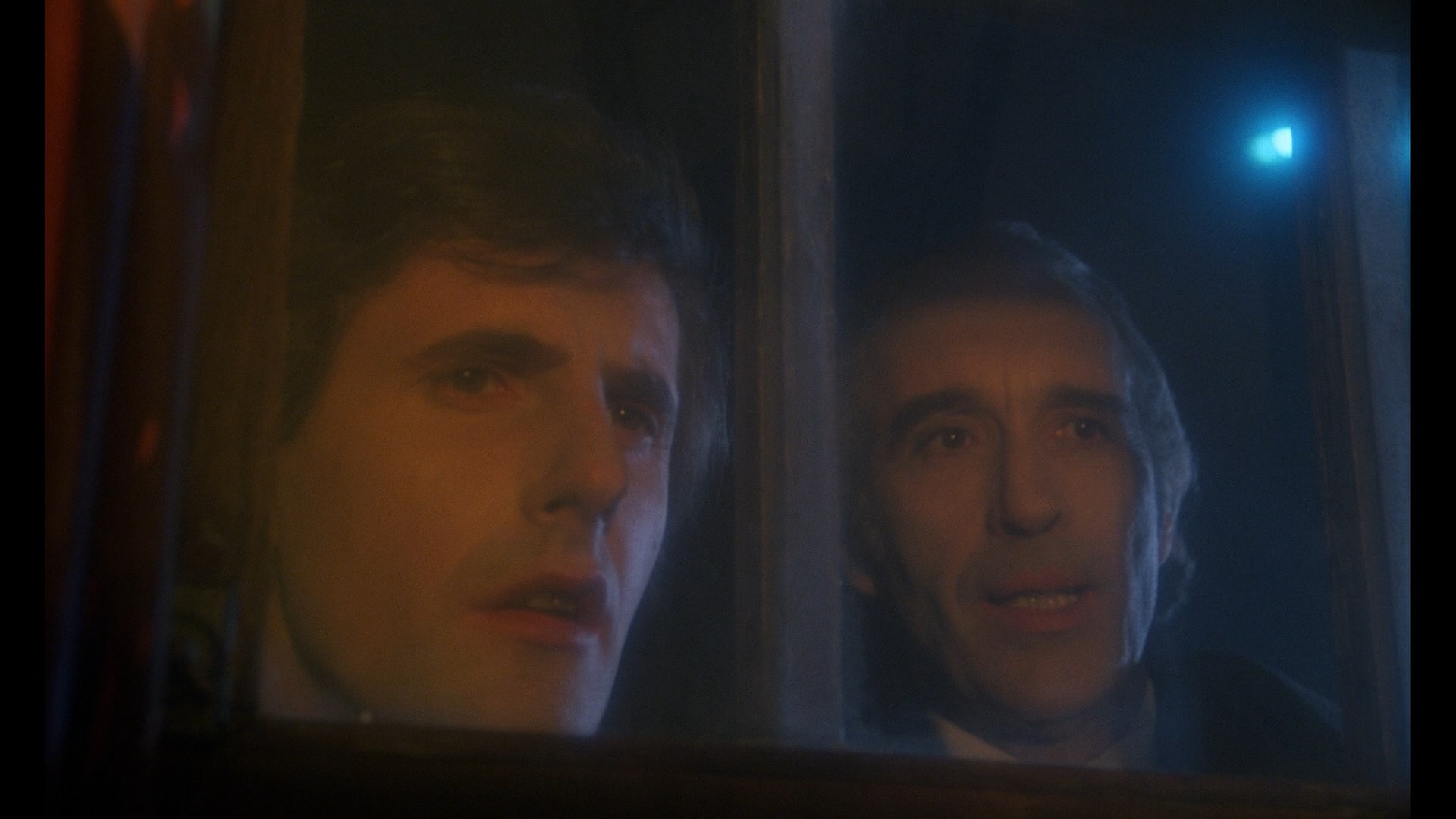 successful French farces from director Édouard Molinaro who scored a big hit after this with La cage aux folles and had already directed A Pain in the Ass, My Uncle Benjamin, and the Louis de Funès favorites Oscar and Hibernatus. He shows a surprising proficiency here with Gothic horror imagery including a stylish prologue in 1784 Transylvania that could easily pass as a genuine Euro horror film. Speaking fluent French here, Lee stars as... well, the title calls him Dracula but the actor himself and the script don't really commit a proper name. In any case he's the Count, an undead nobleman who sets his eye on pretty Herminie (author and future controversial director Catherine Breillat) with whom he sires a son, Ferdinand. He goes on to vampirize her, but unfortunately a carriage mishap involving sunlight ensures their union is short lived. Now a single dad, the Count raises his goofy and disobedient son (played as an adult by Bernard Ménez) who's still evolving vampire-wise 116 years later in the present day. The family is ejected from their home by the Romanian Communist regime, so off they go only to get split up when they get buried at sea while posing as French sailors. On their separate paths the Count finds a successful career as a horror actor in London while Ferdinand becomes a Parisian security guard, tries to live as a human, and falls for Nicole (played by Catherine Breillat's sister, Marie-Hélène). By the time they reunite, the generation gap really seems to span centuries-- including
successful French farces from director Édouard Molinaro who scored a big hit after this with La cage aux folles and had already directed A Pain in the Ass, My Uncle Benjamin, and the Louis de Funès favorites Oscar and Hibernatus. He shows a surprising proficiency here with Gothic horror imagery including a stylish prologue in 1784 Transylvania that could easily pass as a genuine Euro horror film. Speaking fluent French here, Lee stars as... well, the title calls him Dracula but the actor himself and the script don't really commit a proper name. In any case he's the Count, an undead nobleman who sets his eye on pretty Herminie (author and future controversial director Catherine Breillat) with whom he sires a son, Ferdinand. He goes on to vampirize her, but unfortunately a carriage mishap involving sunlight ensures their union is short lived. Now a single dad, the Count raises his goofy and disobedient son (played as an adult by Bernard Ménez) who's still evolving vampire-wise 116 years later in the present day. The family is ejected from their home by the Romanian Communist regime, so off they go only to get split up when they get buried at sea while posing as French sailors. On their separate paths the Count finds a successful career as a horror actor in London while Ferdinand becomes a Parisian security guard, tries to live as a human, and falls for Nicole (played by Catherine Breillat's sister, Marie-Hélène). By the time they reunite, the generation gap really seems to span centuries-- including 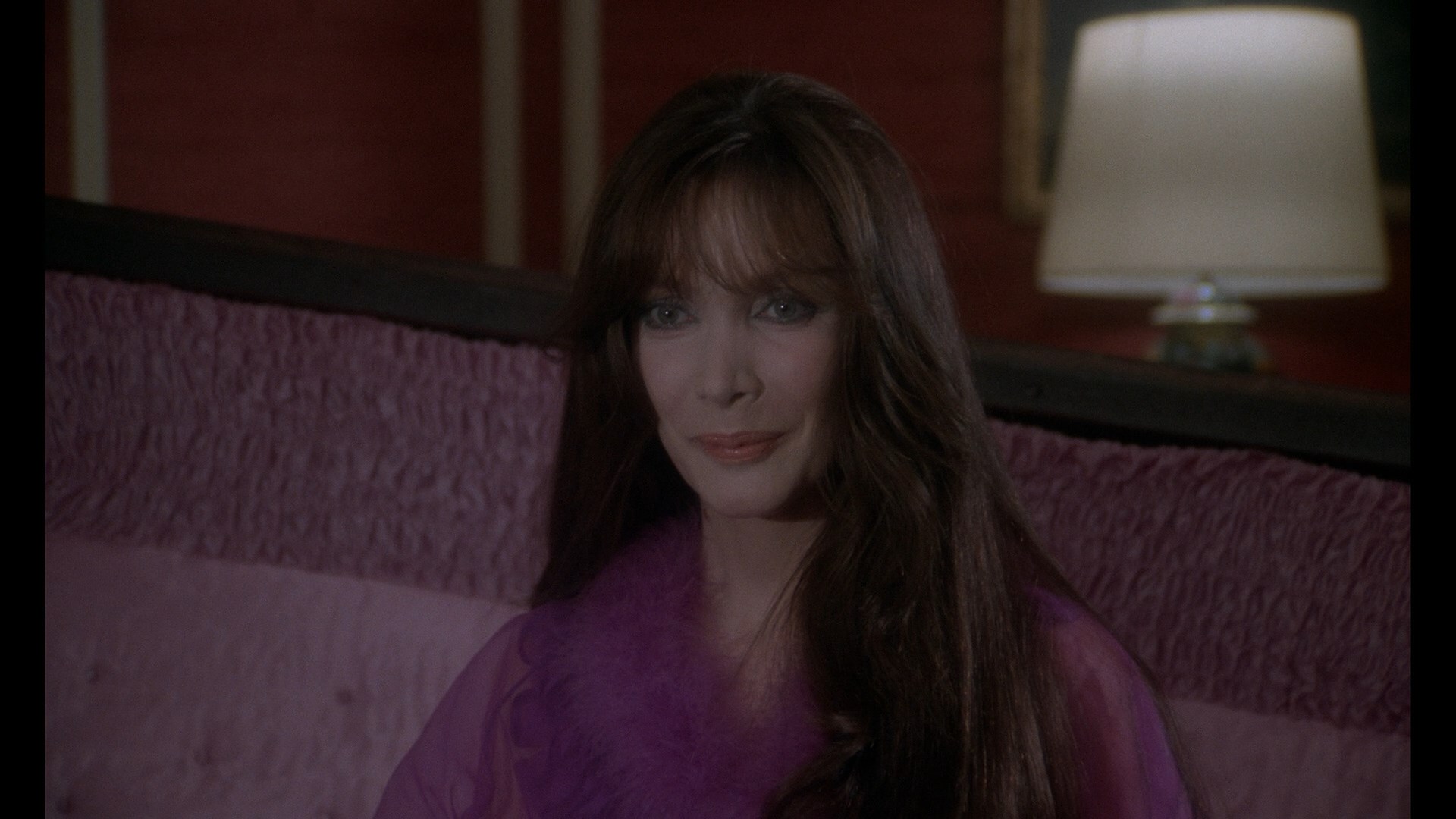 a toothpaste commercial
a toothpaste commercial 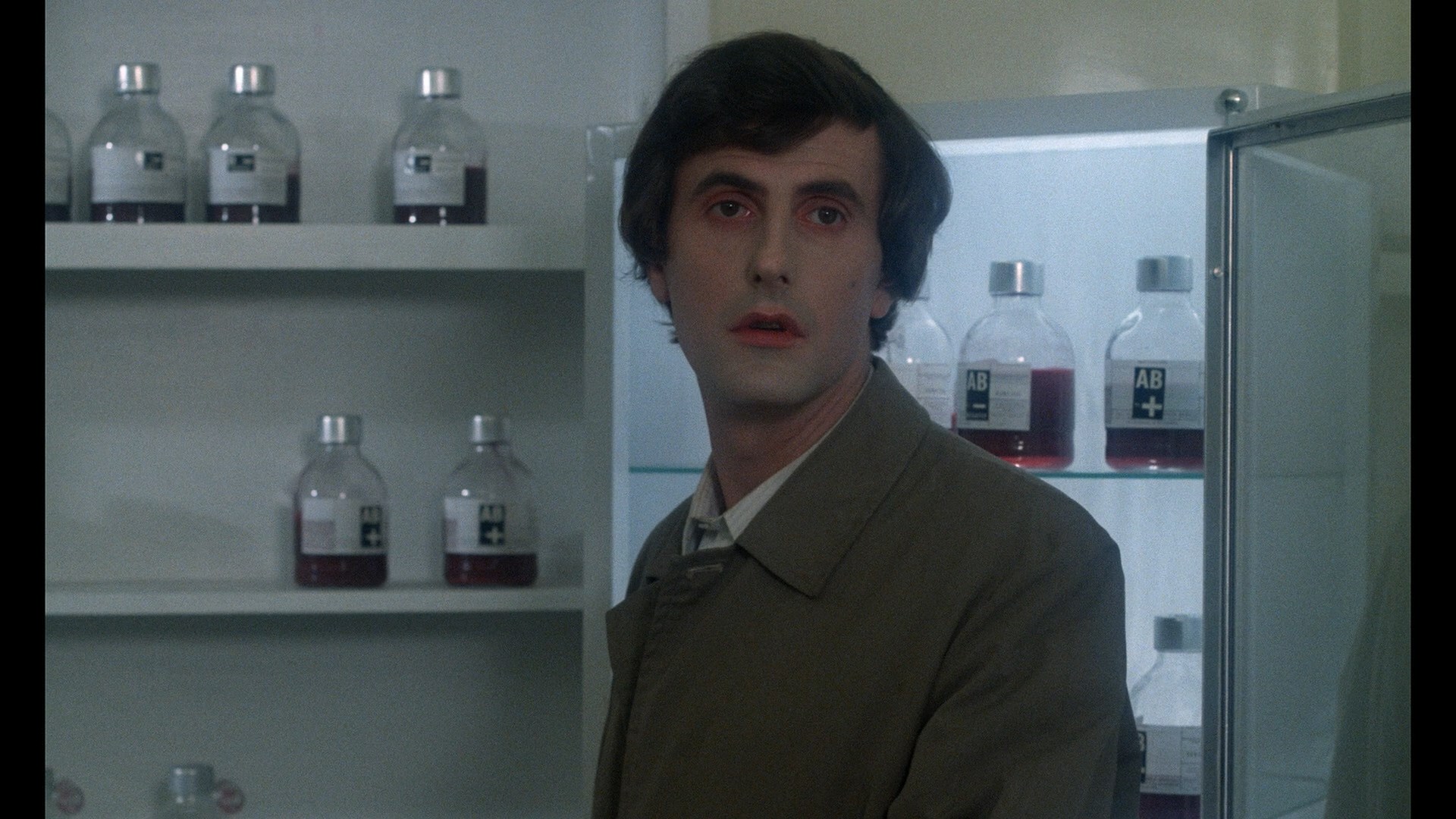 showdown.
showdown.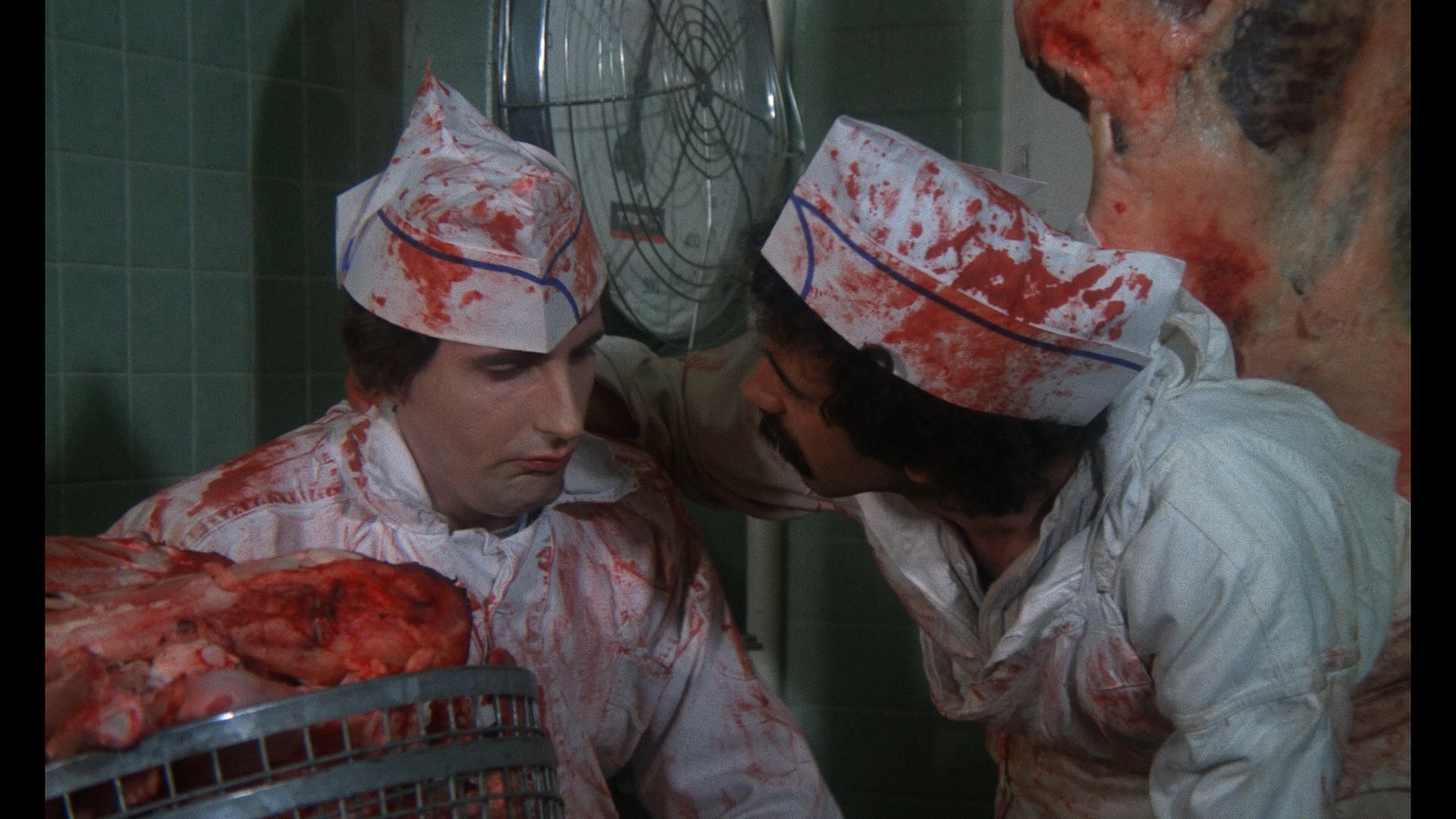 Bearer. The French version later popped up on DVD from Gaumont in 2014 with no English-friendly options.
Bearer. The French version later popped up on DVD from Gaumont in 2014 with no English-friendly options.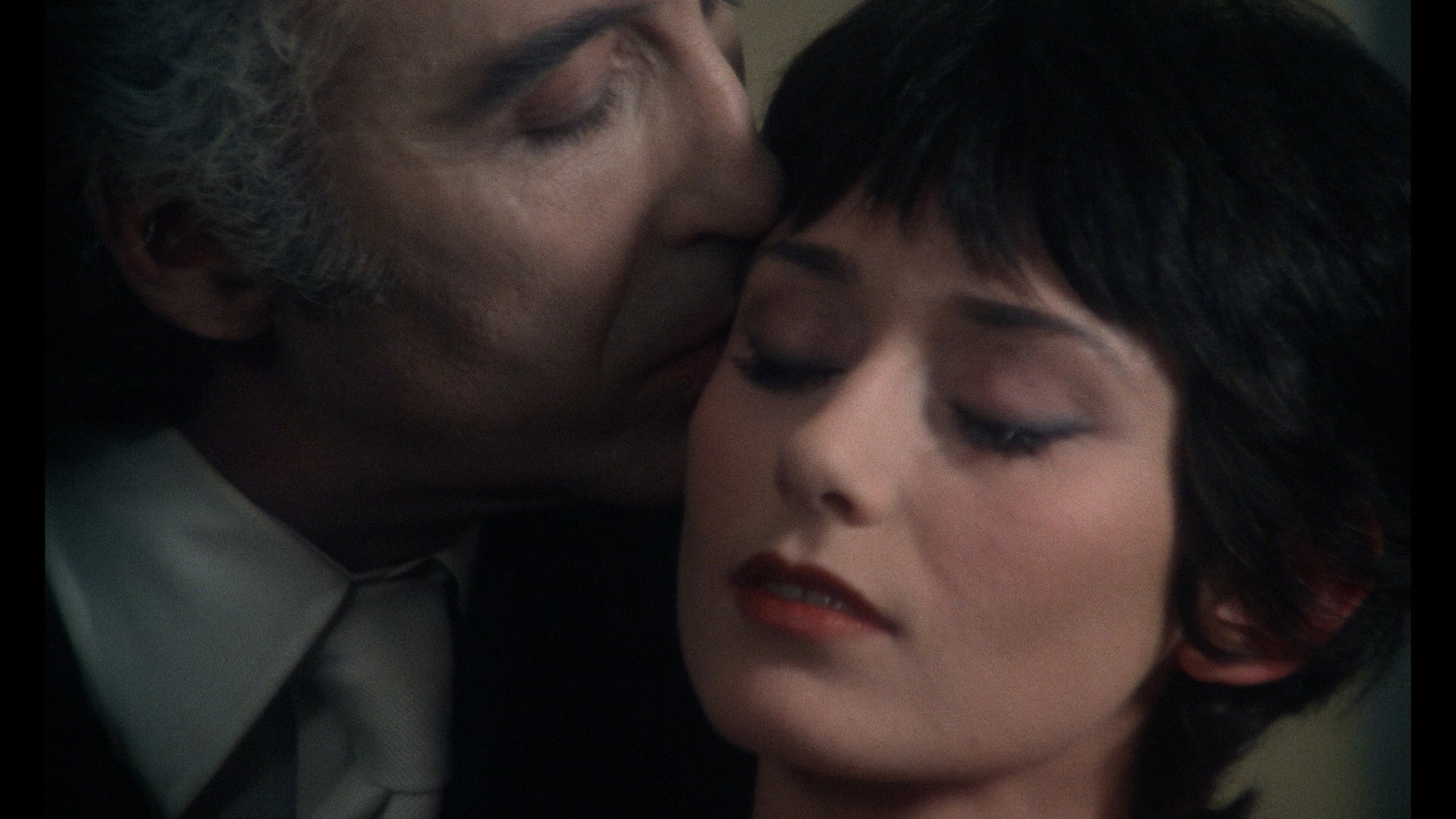 French cut looking spectacular courtesy of a 4K scan of the camera negative. It looks faultless and easily surpasses any version we've had before, including a cavalcade of vibrant colors when they're required. The French and original export English tracks are both here with optional English translated or English SDH subtitles, plus two new audio commentaries. The first features Rigby and Lyons again (logically enough) parsing out the whole issue of which Lee films count as Dracula ones, the backgrounds of all the significant players in front of and behind the camera, ties to a slew of French comedy and horror films, and more. A second track by Kat Ellinger starts out focusing on Molinaro before branching out with an enthusiastic appreciation of the Breillats, the comedic side of Lee and his popping in and out of the continent for jobs, the history of the French Gothic, and the merits of its visual style. In "Let the Son Shine In" (18m51s), Menez looks back at the making of the film and his memories of both Lee and Molinaro as well as his background getting into acting after working as a teacher. (Note that the English subtitles for the extras on this disc don't switch on by default, so keep your remote handy.) A quick archival French TV interview with Lee (1m51s) is really cute as we see him chatting in costume about his role (over lunch, apparently) along with some behind-the-scenes footage. "The Molinaro Tapes" (14m48s) is an audio excerpt from an interview with Frederic Albert Levy from 1979 about his two films for Gaumont (following The Pink Telephone), his positive experiences with Lee, and his positive and negative assessments of the script and the final product. In "Who Was Claude Klotz?" (7m9s), the marvelous filmmaker Patrice Leconte looks back at his three collaborations as a co-writer with the author of this film's source novel (Paris Vampire) which included The Hairdresser's Husband, The Girl on the Train, and Felix & Lola. Klotz is also represented with a 1m49s interview during a 1976 screening of the film in Marseille about his take on the story and its relationship to the Parisian location. The U.S. trailer is also included. Included on a separate Blu-ray is the ridiculous U.S. version, reconstructed here largely using the 4K scan as the source (with extensive reediting, obviously) while slugging in the cartoon opening from a pristine element and the credits from a scratchy but otherwise nice quality print.
French cut looking spectacular courtesy of a 4K scan of the camera negative. It looks faultless and easily surpasses any version we've had before, including a cavalcade of vibrant colors when they're required. The French and original export English tracks are both here with optional English translated or English SDH subtitles, plus two new audio commentaries. The first features Rigby and Lyons again (logically enough) parsing out the whole issue of which Lee films count as Dracula ones, the backgrounds of all the significant players in front of and behind the camera, ties to a slew of French comedy and horror films, and more. A second track by Kat Ellinger starts out focusing on Molinaro before branching out with an enthusiastic appreciation of the Breillats, the comedic side of Lee and his popping in and out of the continent for jobs, the history of the French Gothic, and the merits of its visual style. In "Let the Son Shine In" (18m51s), Menez looks back at the making of the film and his memories of both Lee and Molinaro as well as his background getting into acting after working as a teacher. (Note that the English subtitles for the extras on this disc don't switch on by default, so keep your remote handy.) A quick archival French TV interview with Lee (1m51s) is really cute as we see him chatting in costume about his role (over lunch, apparently) along with some behind-the-scenes footage. "The Molinaro Tapes" (14m48s) is an audio excerpt from an interview with Frederic Albert Levy from 1979 about his two films for Gaumont (following The Pink Telephone), his positive experiences with Lee, and his positive and negative assessments of the script and the final product. In "Who Was Claude Klotz?" (7m9s), the marvelous filmmaker Patrice Leconte looks back at his three collaborations as a co-writer with the author of this film's source novel (Paris Vampire) which included The Hairdresser's Husband, The Girl on the Train, and Felix & Lola. Klotz is also represented with a 1m49s interview during a 1976 screening of the film in Marseille about his take on the story and its relationship to the Parisian location. The U.S. trailer is also included. Included on a separate Blu-ray is the ridiculous U.S. version, reconstructed here largely using the 4K scan as the source (with extensive reediting, obviously) while slugging in the cartoon opening from a pristine element and the credits from a scratchy but otherwise nice quality print. 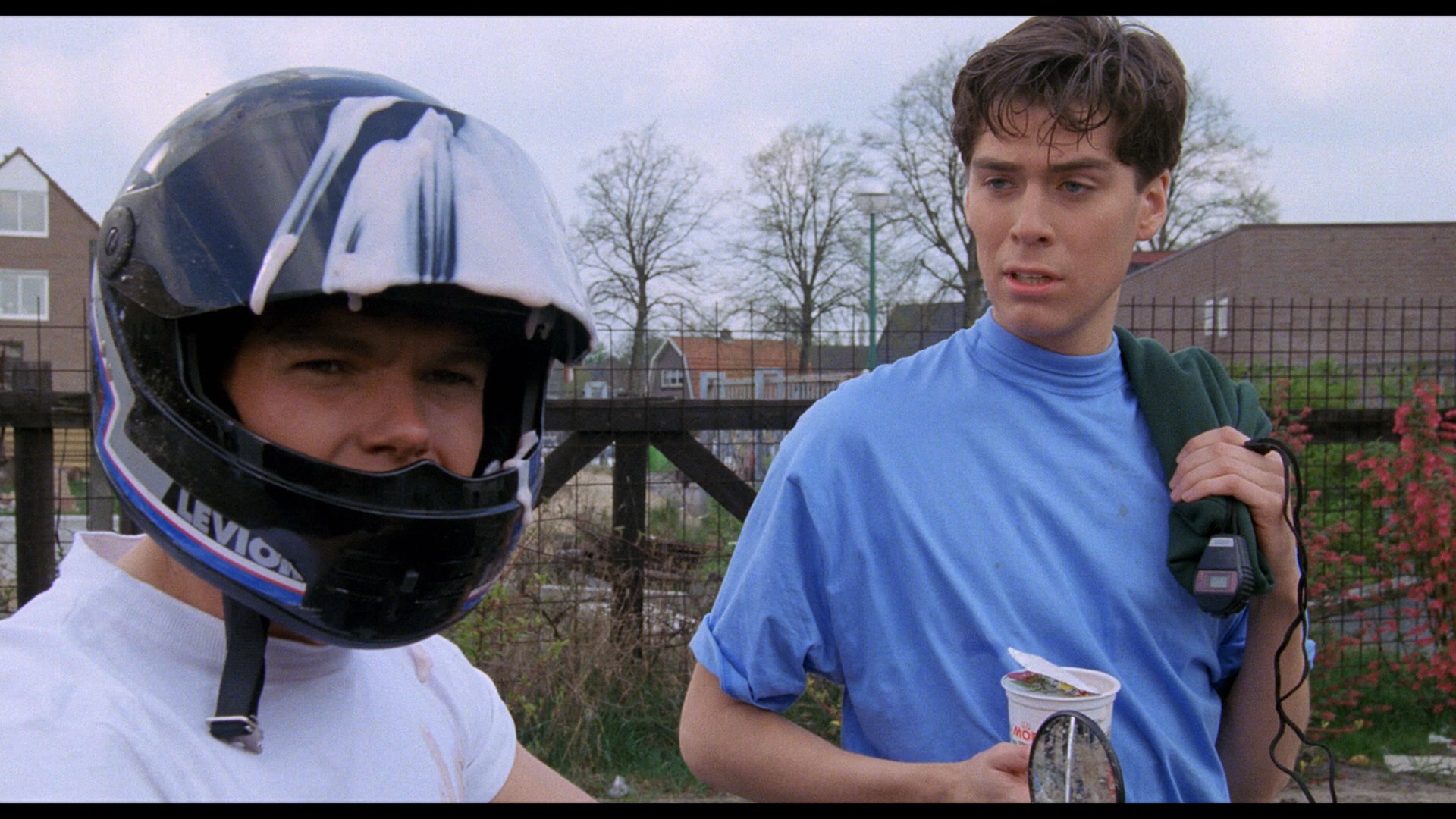 The German credit sequences and a TV spot are also included, plus a bonus CD
The German credit sequences and a TV spot are also included, plus a bonus CD 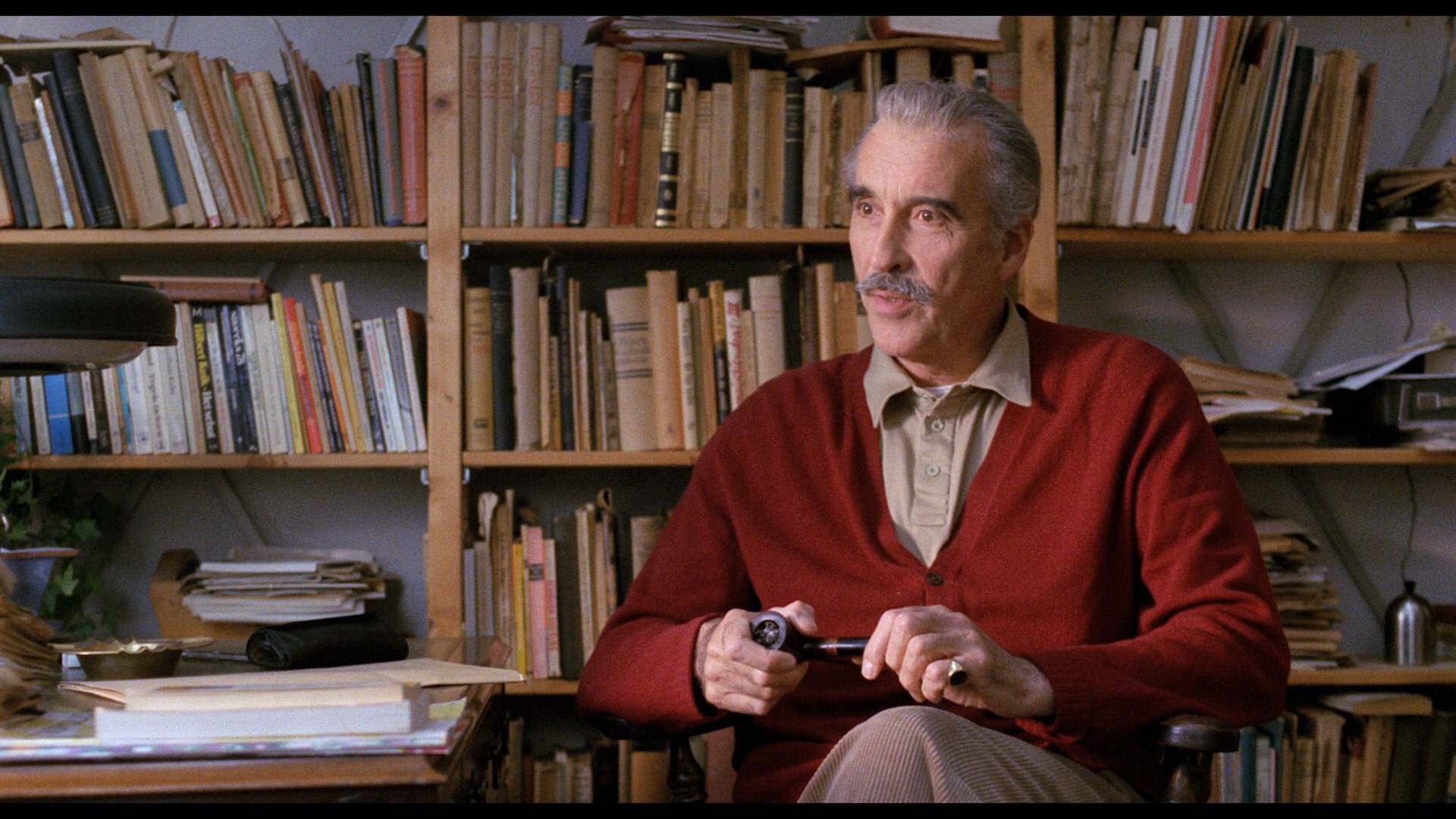 featuring the entire 17-track Vladimir Cosma score (identical to its inclusion in the great 2010 box, 51 Bandes Originales pour 51 Films).
featuring the entire 17-track Vladimir Cosma score (identical to its inclusion in the great 2010 box, 51 Bandes Originales pour 51 Films).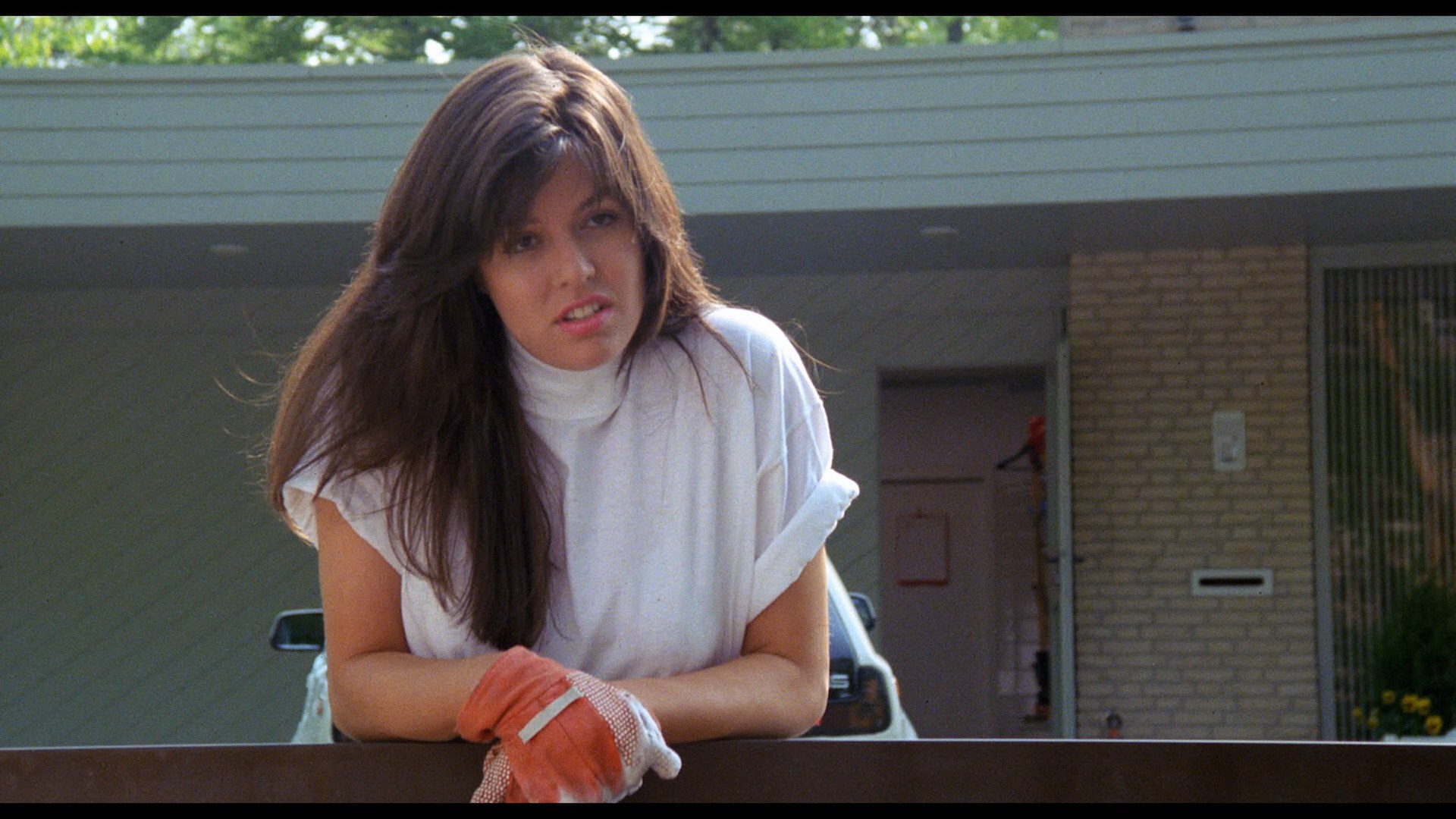 decent identity figure for the presumed younger audience who didn't really materialize for this
decent identity figure for the presumed younger audience who didn't really materialize for this 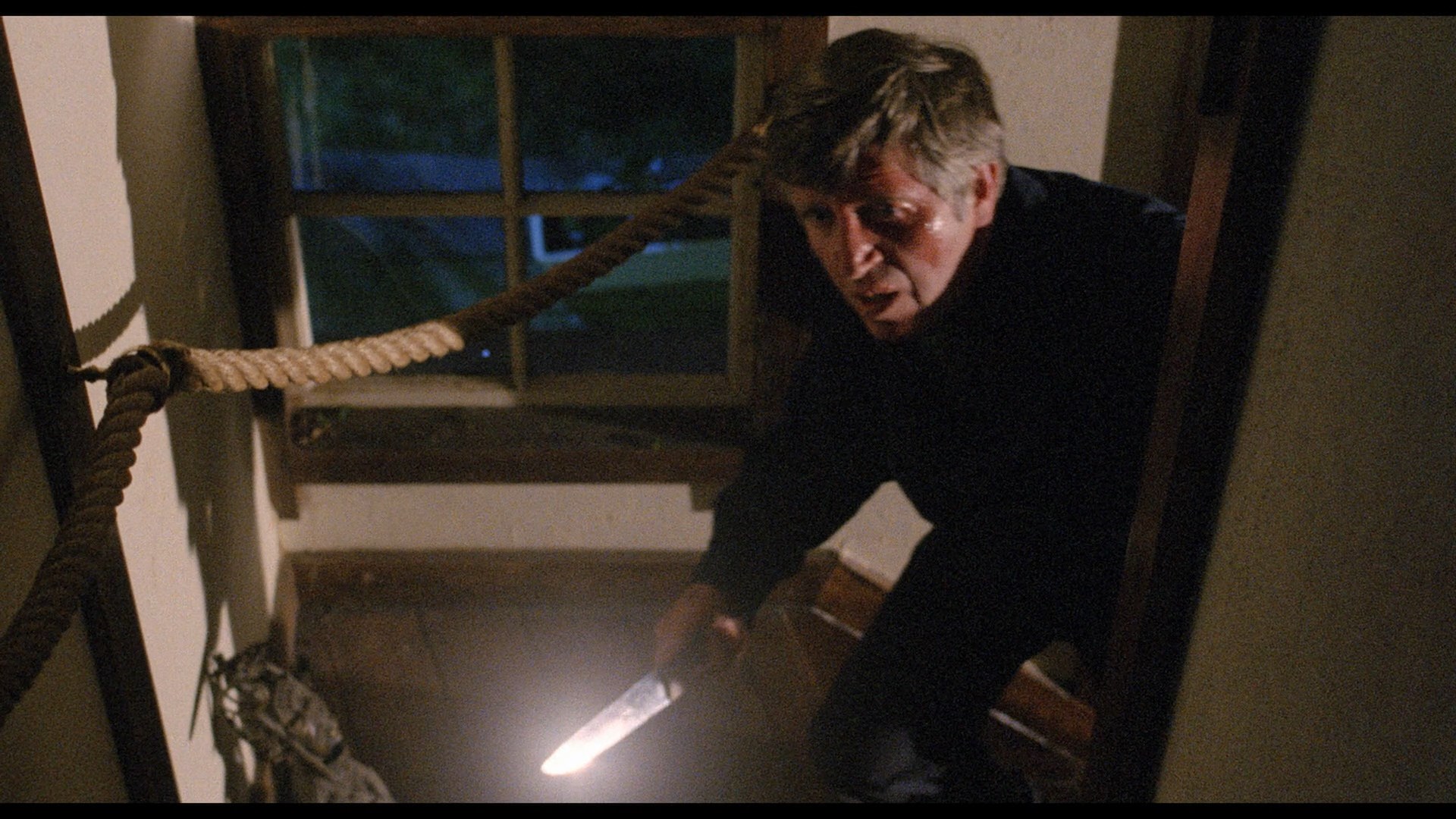 one. It's very chitchatty and unlikely to make anyone's top 10 favorite Lee films (he's a supporting character here at best), but has a cockeyed late '80s Eurocult charm to it.
one. It's very chitchatty and unlikely to make anyone's top 10 favorite Lee films (he's a supporting character here at best), but has a cockeyed late '80s Eurocult charm to it. 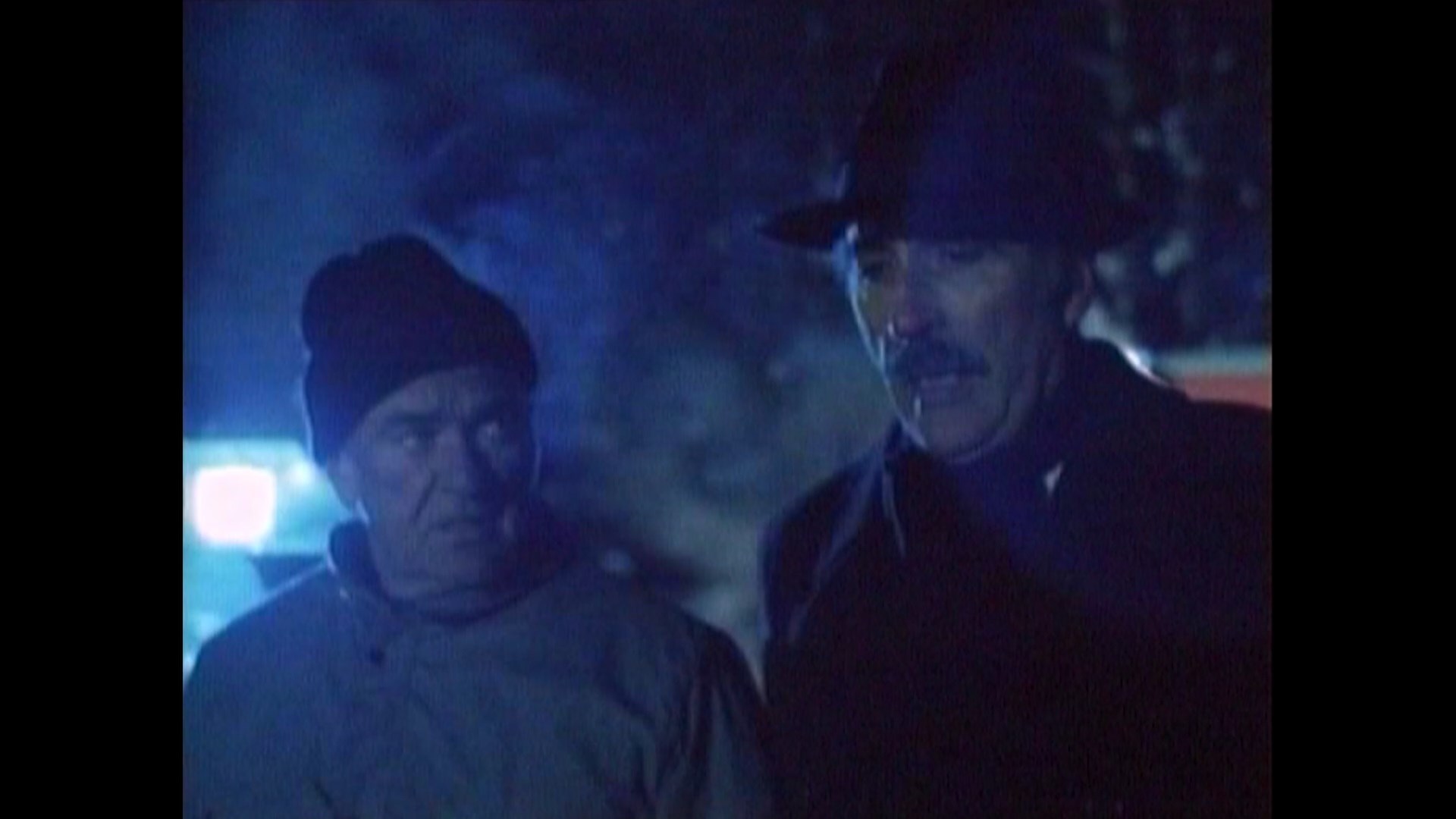 Lee on The Far Pavillions. Tucked away as an extra here is 1985's Mask of Murder (89m11s), culled from a dated and bumpy tape master (the best source around) but nice to have for posterity. In Nelson, "a small town in
Lee on The Far Pavillions. Tucked away as an extra here is 1985's Mask of Murder (89m11s), culled from a dated and bumpy tape master (the best source around) but nice to have for posterity. In Nelson, "a small town in 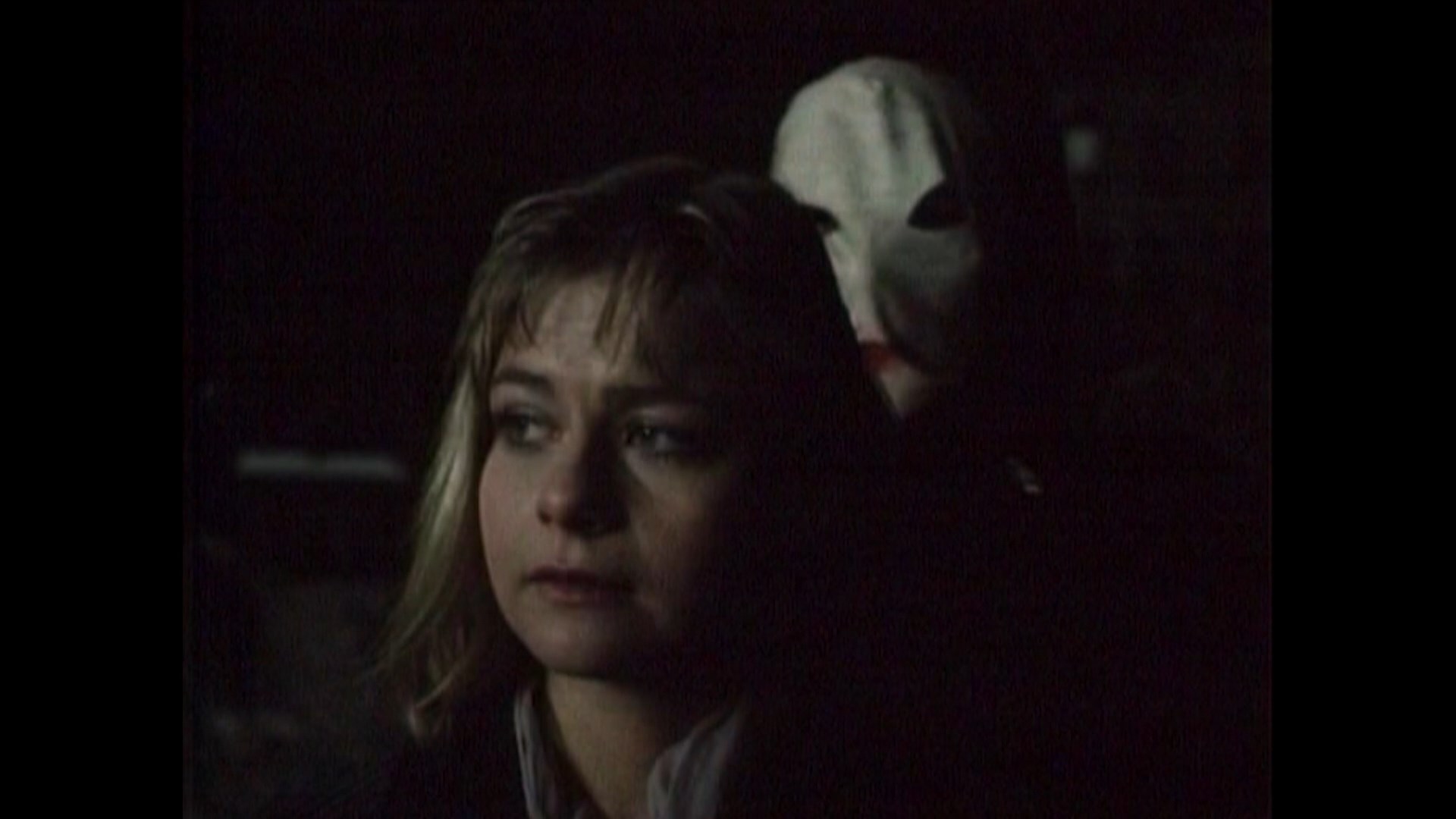 Canada" (actually Sweden), a bug-eyed guy in a white cloth mask is slicing the throats of women on their snowy walks home. From there you get a crime procedural with superintendent Lee roping in Rod Taylor (who's having marital issues with wife Valerie Perrine) to find the killer whose streak continues after they seem to shoot and apprehend the culprit in the middle of the night. It's fairly drab overall with a small role for Lee, but Taylor fans will dig it and the ending has a nice giallo-style panache to it. The striking box package also comes with a hefty 100-page illustrated book, Christopher Lee: A Career in Six Snapshots, with Rigby providing an illuminating and sometimes surprising overview of the star's career from 1959 to 1988 with a number of anecdotes along the way.
Canada" (actually Sweden), a bug-eyed guy in a white cloth mask is slicing the throats of women on their snowy walks home. From there you get a crime procedural with superintendent Lee roping in Rod Taylor (who's having marital issues with wife Valerie Perrine) to find the killer whose streak continues after they seem to shoot and apprehend the culprit in the middle of the night. It's fairly drab overall with a small role for Lee, but Taylor fans will dig it and the ending has a nice giallo-style panache to it. The striking box package also comes with a hefty 100-page illustrated book, Christopher Lee: A Career in Six Snapshots, with Rigby providing an illuminating and sometimes surprising overview of the star's career from 1959 to 1988 with a number of anecdotes along the way.![]()